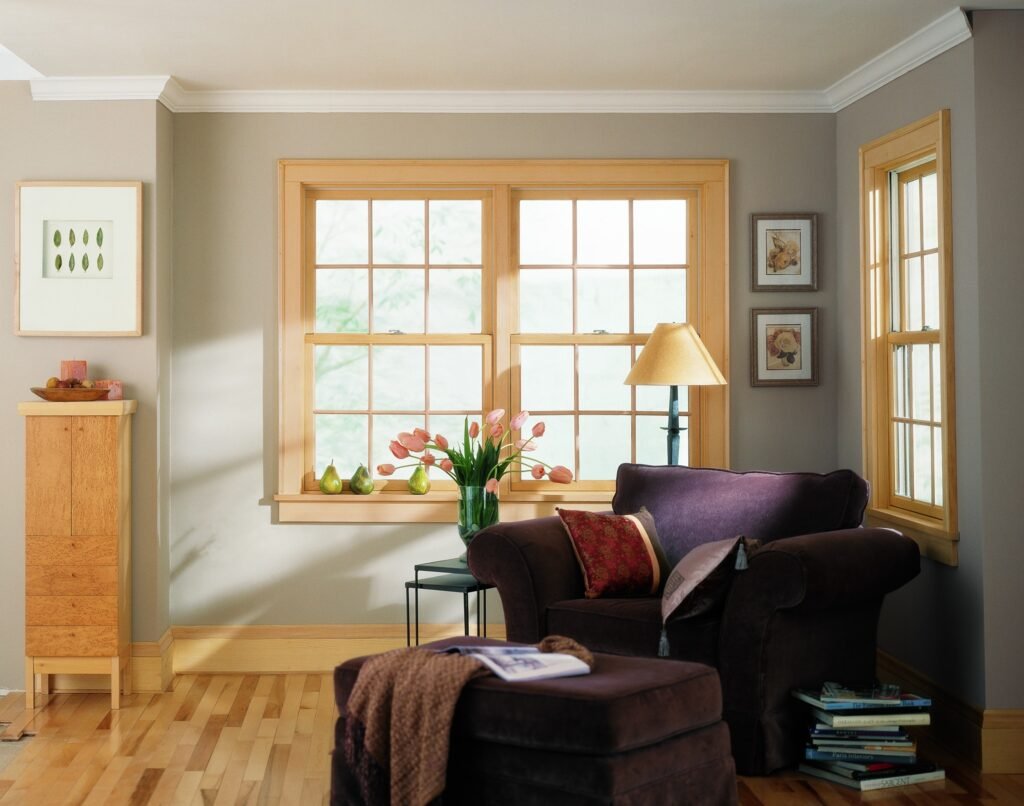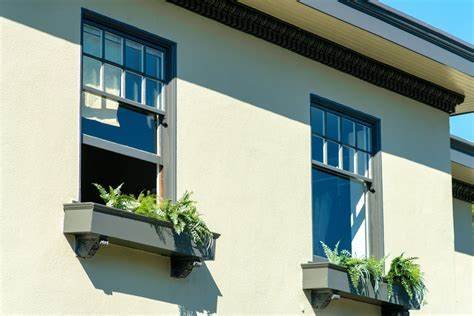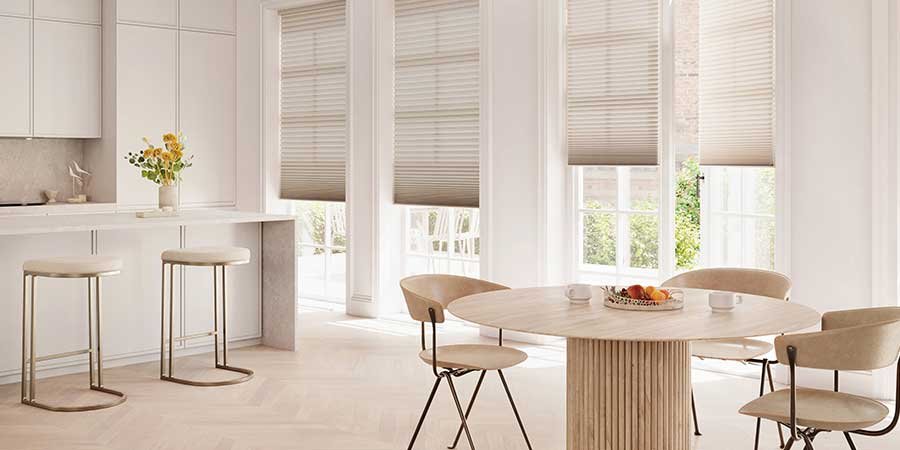Natural light has a significant impact on the atmosphere and energy efficiency of your home. Properly designed windows can not only bring in sunlight but also contribute to your well-being by reducing the need for artificial lighting and promoting a sense of openness and warmth. In this article, we’ll explore the role of windows in enhancing natural light and how different types of windows can optimize sunlight in your home.
1. Why Natural Light Matters
Before diving into the specifics of window types, it’s important to understand why natural light is so beneficial. Sunlight offers numerous advantages, including:
- Health Benefits: Exposure to natural light can improve your mood, boost energy levels, and support your overall mental health. It also helps regulate your circadian rhythm, leading to better sleep.
- Energy Efficiency: The more natural light you allow into your home, the less you’ll rely on artificial lighting during the day. This reduces your energy consumption and lowers utility bills.
- Aesthetic Appeal: Natural light can enhance the appearance of your interior space, making rooms feel larger, brighter, and more inviting. It can also highlight architectural features and improve the color of your decor.
2. The Role of Window Size and Placement
When it comes to maximizing natural light, the size and placement of your windows are key factors. Larger windows allow more sunlight to flood into a room, creating a bright and airy atmosphere.
Maximizing Light with Large Windows
Consider installing floor-to-ceiling windows or expansive picture windows in rooms where you want to let in more light. These windows offer unobstructed views and allow for an abundance of sunlight to enter, especially if the window faces the sun during the day. Large windows are ideal for living rooms, dining areas, and bedrooms where you want to create a spacious feel.
Strategic Window Placement
Where you place your windows is also crucial in optimizing natural light. South-facing windows (in the Northern Hemisphere) generally receive the most sunlight throughout the day, making them ideal for living spaces and kitchens. On the other hand, east- and west-facing windows will give you sunlight in the morning and evening, respectively. You can plan your window placement to take advantage of these natural light patterns, ensuring that every room gets the optimal amount of sunlight.
3. Choosing the Right Window Styles
Different types of windows can help you make the most of natural light, depending on your needs and the design of your home. Here are a few window styles that are especially effective at enhancing natural light:
Picture Windows
Picture windows are large, fixed windows that allow for uninterrupted views and plenty of sunlight. They are perfect for living rooms, dining rooms, and bedrooms where you want to maximize natural light without the need for ventilation. Since these windows don’t open, they are ideal for areas where the view and daylight are the main priorities.

Casement Windows
Casement windows are hinged at the side and open outward, offering an expansive opening. When opened, they can allow fresh air to flow into your home while still letting in natural light. Casement windows are excellent for maximizing both daylight and ventilation, making them ideal for kitchens, bathrooms, and living spaces.
Sliding Windows
Sliding windows open horizontally, making them great for areas where space is limited. They allow you to let in more natural light while also providing ease of access to the outdoors. Sliding windows are a popular choice for modern homes, especially those with open floor plans that seek a sleek, minimalistic design.
Awning Windows
Awning windows are hinged at the top and open outward, providing a unique way to allow natural light and ventilation while maintaining privacy. These windows are perfect for rooms that need a little extra light but also require some protection from the elements, such as basements or bathrooms.
4. Maximizing Light with Glass Choices
The type of glass used in your windows can also impact the amount of natural light that enters your home. Modern glass technologies have evolved to offer a variety of benefits that allow you to maximize daylight without compromising comfort or energy efficiency.
Low-E Glass
Low-emissivity (Low-E) glass is a coating applied to the window glass that helps reflect heat while allowing sunlight to pass through. This type of glass is ideal for enhancing natural light while also improving the energy efficiency of your windows. Low-E glass prevents heat from escaping during the winter and blocks excess solar heat during the summer, making it an excellent choice for year-round comfort.
Clear Glass vs. Tinted Glass
Clear glass is the best option if your primary goal is to maximize natural light, as it allows for maximum sunlight penetration. However, tinted glass or frosted glass can be useful if you need to reduce glare or increase privacy. While tinted glass may slightly reduce the amount of natural light that enters a room, it can still help enhance daylight without the harshness of direct sunlight.
5. Consider Window Treatments
While windows are essential for bringing in natural light, window treatments can also play a role in controlling how much sunlight enters a room. The right treatments can help enhance daylight without sacrificing privacy or comfort.
Sheer Curtains or Blinds
Sheer curtains or light blinds are great options for diffusing sunlight and creating a soft, inviting atmosphere. These treatments allow natural light to flood the room while reducing glare, making them ideal for living rooms, dining areas, or bedrooms. You can also adjust the opacity of the window treatments to control how much light enters the room at different times of the day.
Plantation Shutters
Plantation shutters are an excellent choice for letting in plenty of light while also giving you control over privacy and light levels. The adjustable slats allow you to fine-tune how much sunlight enters, so you can create the perfect balance between daylight and privacy.
6. Use Architectural Features to Enhance Light
In addition to windows, you can incorporate various architectural features into your home’s design to further enhance natural light.
Skylights and Roof Windows
Skylights are a fantastic way to bring natural light into rooms with limited wall space for windows. These ceiling windows allow sunlight to enter from above, illuminating darker spaces such as hallways, bathrooms, or staircases. Skylights are also beneficial for adding a sense of openness to rooms with sloped ceilings, like attics or lofts.
Light Wells and Atriums
In homes with darker rooms or those in urban settings, light wells or atriums can be used to capture and direct natural light into the interior spaces. These architectural features create small open areas that funnel light into the rooms below, helping to brighten areas that might otherwise remain dim.
Conclusion
Windows play a crucial role in enhancing natural light in your home, improving both the aesthetic and functional aspects of your living space. By choosing the right window types, sizes, and placements, you can maximize daylight, reduce energy consumption, and create a bright, inviting atmosphere. Whether you opt for larger windows, strategically place your windows for optimal sunlight, or choose specialized glass, your windows are an essential element in brightening your home and improving your quality of life.











